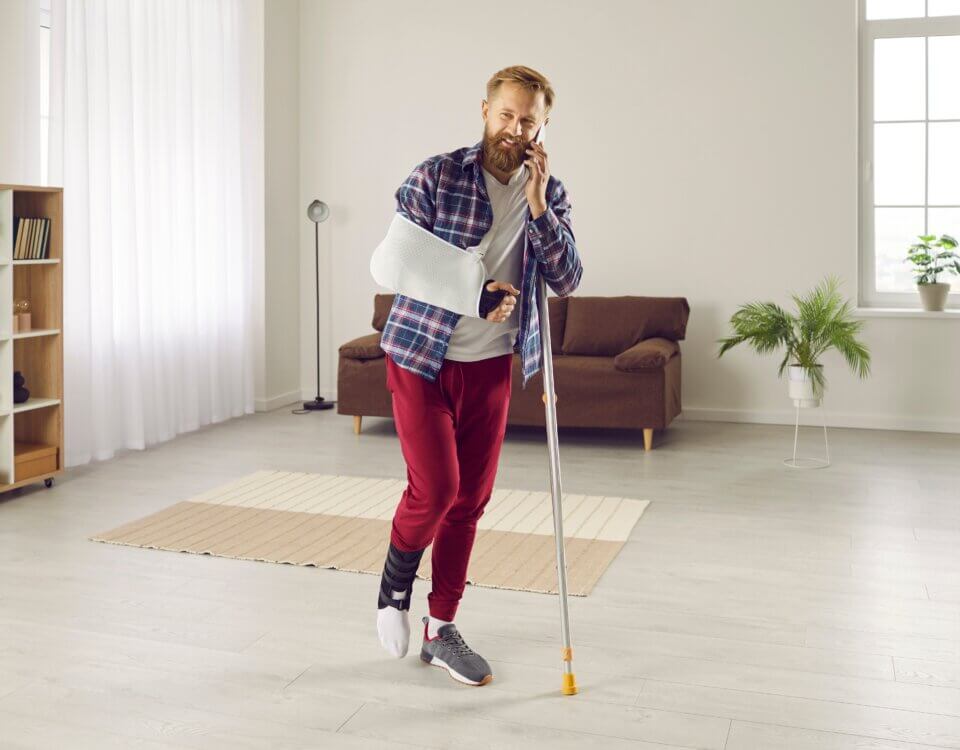A head-on collision occurs when the front ends of two vehicles crash into each other directly. These are among the most dangerous types of crashes because both vehicles often carry a lot of speed, which increases the force of impact and the potential for serious harm.
Common Causes of Head-On Collisions
- Driver error such as being distracted, driving while impaired, or fatigue
- Poor weather or road conditions including rain, fog, ice, potholes or faded lane markings that make staying in the correct lane more difficult
- Unexpected lane drifting or crossing over center lines, often due to inattention or loss of control
Typical Injuries from Head-On Collisions
- Head injuries including concussions or more severe brain trauma when heads strike the steering wheel, dashboard or windshield
- Neck injuries such as whiplash resulting from sudden forward and backward motion
- Spinal cord damage that can lead to paralysis, depending on where and how bad the injury is
What You Should Do After a Head-On Collision
- Seek medical attention immediately, even if you feel okay at first because some injuries become more serious over time
- Document everything at the scene including photos of damage, road conditions, vehicle positions, and any skid marks
- Get contact information from the other driver, passengers, and witnesses
- Be cautious with what you say to insurance adjusters or others about fault until the full facts are known
Legal Considerations
- Liability needs to be established, which may involve proving the other driver was negligent
- Evidence like police reports, witness accounts, medical records, and sometimes experts are often needed
- Being prompt with filing required insurance notices or lawsuits is important to protect your legal rights
How Hillstone Law Can Help
If you have been involved in a head-on collision, Hillstone Law can review what happened gather evidence determine fault help with insurance negotiations or take your case to court if needed to seek full compensation for medical injuries, property damage, lost wages, pain and suffering, and other harms.
Note: These blog posts are created solely for the use of Hillstone Law. The information is gathered from internet research, publicly available sources, and artificial intelligence (AI) tools such as ChatGPT. While we aim to share helpful and educational content, Hillstone Law does not independently verify every detail. Some information may be incomplete, outdated, or subject to change without notice. If you believe any part of a post is inaccurate, misleading, or infringes upon copyright, please contact Hillstone Law immediately so we can review it and take appropriate action, including correction or removal.
Disclaimer: The material provided in these blogs is for general informational purposes only and should not be considered legal advice. Reading these posts does not create, and is not intended to create, an attorney-client relationship with Hillstone Law. Our intent is to share knowledge, raise awareness, and provide helpful resources to the public; however, Hillstone Law makes no warranties or guarantees about the accuracy, completeness, or reliability of the information provided, and expressly disclaims liability for any actions taken in reliance on it. The photos used in these posts are for illustrative purposes only and do not depict actual clients, individuals, or incidents unless expressly stated. If you or a loved one has been injured in an accident, please contact Hillstone Law at (855) 691-1691. Our attorneys are available to answer your legal questions and help you understand your rights.








